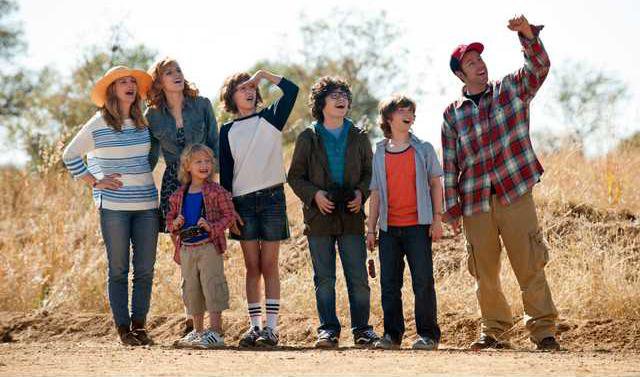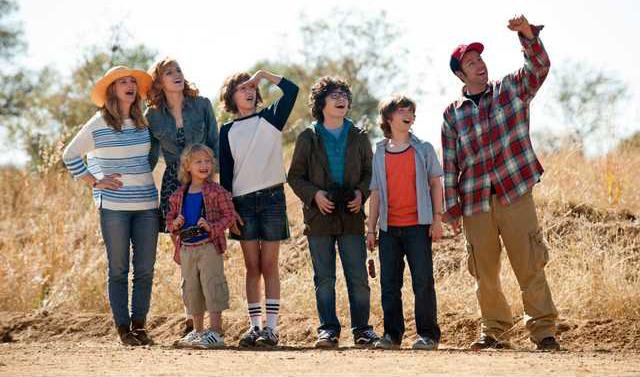There’s a new film coming out this weekend that suggests young boys need their fathers and young girls need their mothers. It’s big on second chances, forgiveness and the power of a family that comes together.
It’s a peach-of-a-movie, so long as you don’t mind all the jokes about tampons, masturbation and mating rhinos.
The biggest problem with “Blended” is its blending. It delivers a well-intentioned message of family togetherness soaked in vulgarity and sex gags. Parents, don’t let all the cute little kids in this movie throw you: “Blended” is rated PG-13 for a reason.
“Blended” also marks the third romantic comedy pairing of Adam Sandler and Drew Barrymore, who have effectively become the Tom Hanks and Meg Ryan of their generation. Hanks and Ryan were the Spencer Tracy and Katharine Hepburn of their generation, so you can’t really be faulted if the whole thing leaves you a little depressed.
Sandler plays Jim, a widower trying to raise three daughters on the money he gets from a steady job at Dick’s Sporting Goods. As a result, his girls sport tomboy haircuts, wear track suits and are often mistaken for boys.
Barrymore plays Lauren, a professional closet organizer trying to raise two boys without the help of their deadbeat father, Mark (Joel McHale, included to make “Community” fans more depressed). One son is struggling to hit a baseball; the other is pasting pictures of the babysitter’s head on the centerfolds of his dirty magazines.
Jim and Lauren get set up on a blind date, and it doesn’t go well. But Hollywood’s particular brand of destiny is involved, so they keep running into each other around town, and eventually a timely mix-up lands the whole crew on a blended family getaway in Africa.
If you don’t know where this is going, you should stop going to movies and start reading ingredient lists at the grocery store for your entertainment. But the predictable plot isn’t really the problem with “Blended.” The problem is that it takes a message steeped in family values and saturates it with so much sophomoric, cringe-worthy humor that no family would ever feel comfortable watching it together. The best counter-argument is that it’s a film for parents, but often it feels like the slapstick-heavy humor is best suited for 13-year-old boys.
There really are some sweet moments in this film, like when Lauren helps Jim’s daughter get a makeover so she can impress a boy who catches her eye, or pretty much any scene between Jim and his youngest daughter, Lou. That’s what you try to focus on if you prefer your cinematic glasses half-full.
But every sweet moment comes with a dirty joke or action, and the mainstream jokes (Lauren can’t carry her sleeping son five feet without bonking his head on something! Terry Crews has crazy-person eyes!) are so overused that you wonder if the filmmakers were just trying to stretch the film to 90 minutes. Then you realize that “Blended” is 117 minutes long.
If it were another harmless throwaway comedy built on junior high locker-room humor, it wouldn’t be a big deal. But “Blended” could have been better. And that’s disappointing.
“Blended” is directed by Frank Coraci, who also helmed 1998’s “Wedding Singer.” That was a well-written film that showcased Sandler and Barrymore’s genuine chemistry. They may not be Tracy and Hepburn, but they could have given us something closer to that.
“Blended” is rated PG-13 for frequent profanity, vulgarity and sexual content.
Joshua Terry is a freelance writer and photojournalist, and you can see more of his work at woundedmosquito.com








